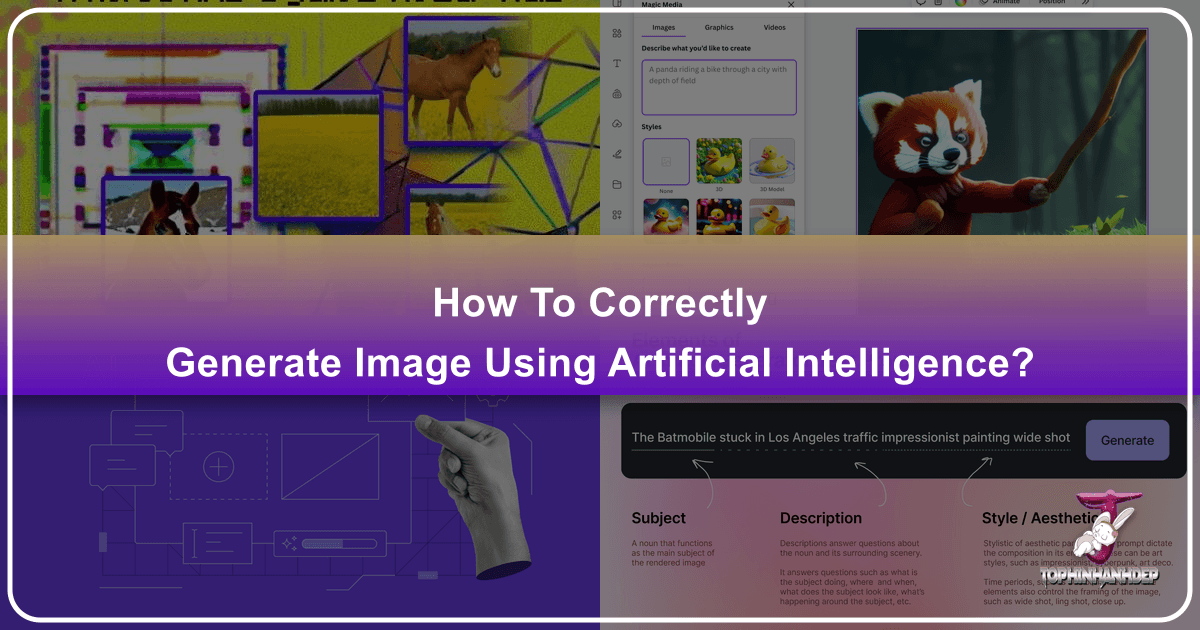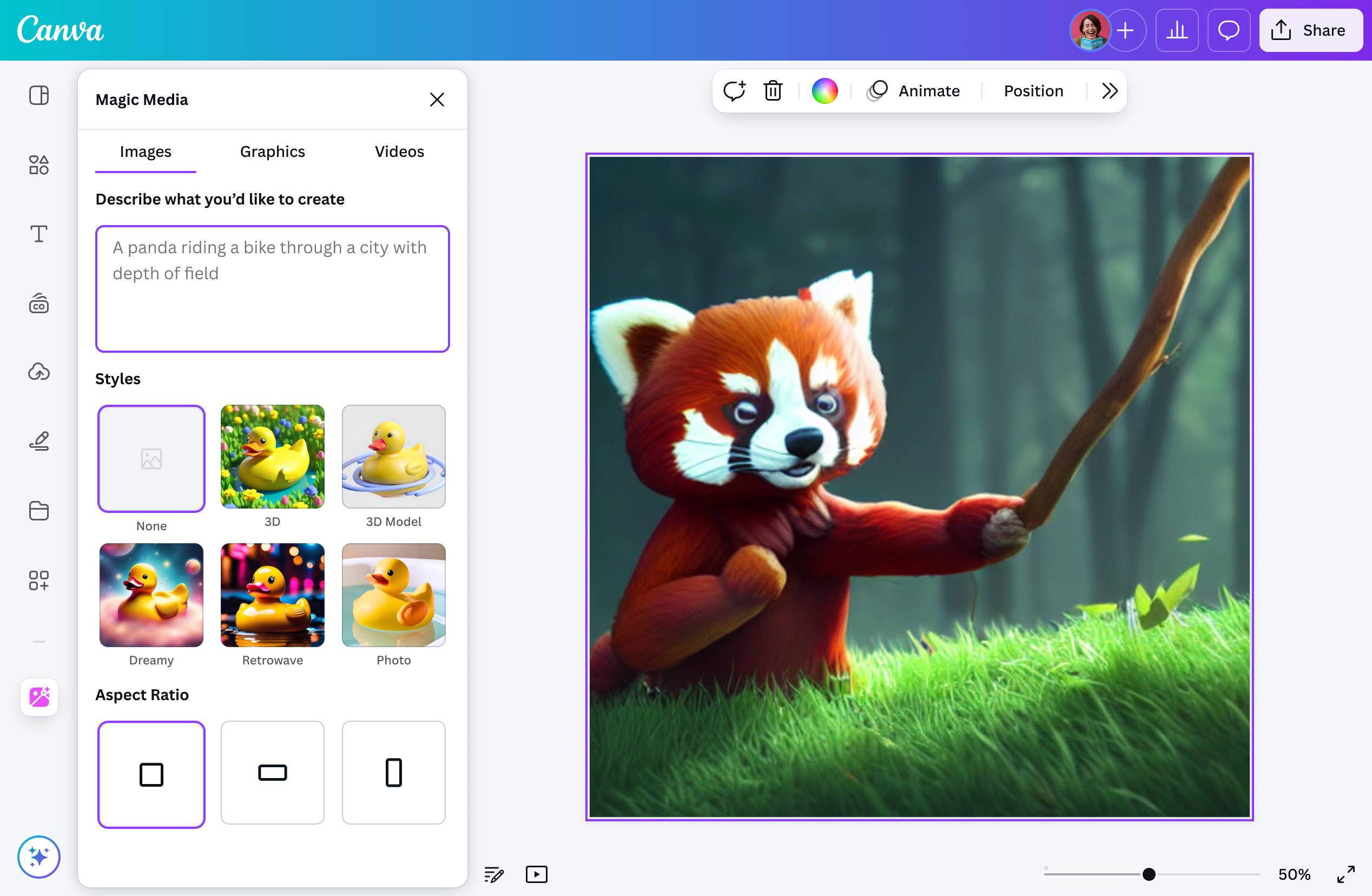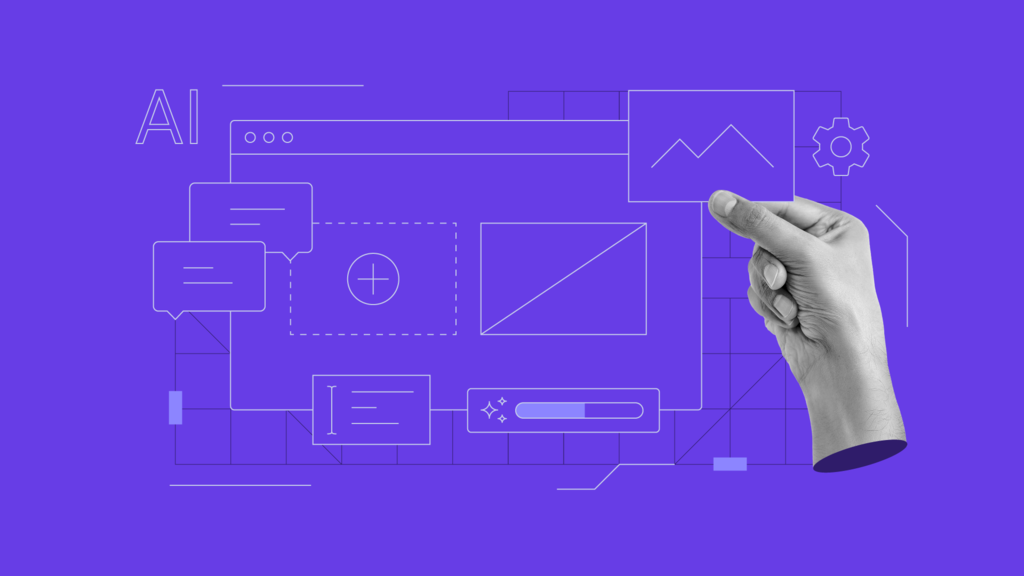How to Correctly Generate Images Using AI for Tophinhanhdep.com

In an era where technology continually blurs the lines between reality and imagination, artificial intelligence has emerged as a fascinating and indispensable tool for artists, designers, and creators across the digital landscape. For a platform dedicated to stunning visuals like Tophinhanhdep.com, understanding and harnessing AI image generation is not just an advantage—it’s a gateway to limitless creative possibilities. Imagine conjuring breathtaking wallpapers, aesthetic backgrounds, nature-inspired scenes, abstract masterpieces, or emotionally resonant photography with just a few clicks. AI image generators can transform your vivid concepts into visually stunning realities, revolutionizing how we approach digital art, photography, and visual design.
However, the world of AI image generation is more intricate than simply typing a few words and expecting perfection. To truly unlock its potential, especially for producing high-resolution, high-quality images suitable for Tophinhanhdep.com’s diverse collections, it’s crucial to understand the underlying mechanisms, master prompt engineering, and effectively utilize post-generation tools. This comprehensive guide will explore the ins and outs of correctly generating images using AI, helping you navigate the nuances from conceptualization to final output, and ensuring your creations are nothing short of dazzling.
Understanding the Core Mechanics of AI Image Generation

At the heart of AI image generation lies a complex interplay of advanced algorithms and neural networks, allowing machines to interpret human language and translate it into visual forms. This seemingly magical process is built upon years of rigorous research and development, constantly pushing the boundaries of what’s possible in digital art.
The Role of Neural Networks and Diffusion Models
The fundamental principle behind most AI image generators, including the sophisticated tools you might encounter, involves a class of models known as “stable diffusion” or “diffusion models.” These models are trained on colossal datasets comprising billions of images paired with their descriptive captions, drawn from the boundless imagery of the internet. This extensive “diet” enables the AI to learn intricate patterns, features, and contextual relationships within visual data, from colors and textures to shapes and objects.

More methodologically, the workings of these generative models can be traced back to “energy-based models” originating decades ago. Imagine dropping a dot of ink into water and watching it dissipate into a uniform texture. Now, envision reversing this process: gradually, the uniform texture coalesces back into the original ink dot. Similarly, in AI image generation, the model starts with pure random noise—a completely disordered visual state—and iteratively learns how to reverse a “dissipation” process. Through countless training cycles, it refines this “reverse diffusion” to transform noise back into coherent, realistic, and increasingly detailed images that resemble the billions it has previously seen.
Two particularly influential architectures in this space are Generative Adversarial Networks (GANs) and Variational Autoencoders (VAEs). GANs consist of two competing neural networks: a “generator” that creates images and a “discriminator” that evaluates their authenticity. This rivalry continuously refines both models, pushing the generator to produce images so realistic that the discriminator struggles to differentiate them from real photographs. VAEs, on the other hand, focus on encoding input data into a compressed “latent space” before decoding it back into an output image, introducing subtle variations for creative exploration. Tophinhanhdep.com’s “Photography” and “Image Inspiration & Collections” categories greatly benefit from these technologies, enabling the creation of high-resolution, stock-quality photos and diverse thematic collections.

AI’s Grasp of the Visual World
A common question among users is whether AI image generators truly “understand” the natural and physical worlds they depict. The answer is nuanced: yes, to a significant extent, they do. If you prompt a model to generate “a stable configuration of blocks,” it will accurately render a physically plausible arrangement. Similarly, if asked for “a tree next to a lake,” the AI can synthesize a scene that adheres to common sense spatial relationships. These models seem to have captured a large aspect of common sense, correlating elements within vast datasets.
However, their understanding is based on correlation, not necessarily underlying causal mechanisms. This becomes evident when attempting to generate infrequent or logically inverted combinations of words that humans can easily imagine. For instance, while “a fork on top of a plate” is readily generated, asking for “a plate on top of a fork” will often still produce a fork on a plate. The AI, having primarily seen the former configuration in its training data, recapitulates the most common pattern rather than grasping the physical impossibility or logical inversion.
Another well-known example is “an astronaut riding a horse” (which AI handles with ease) versus “a horse riding an astronaut” (which often still results in a person riding a horse). This limitation highlights that while AI excels at learning and reproducing patterns, it struggles to generalize to truly novel or causally inverted scenarios it hasn’t encountered. Furthermore, highly complicated scene descriptions with multiple objects and precise spatial relationships often challenge current models, resulting in only partial fulfillment of the prompt’s details. This suggests that while AI has made immense strides, human creativity and conceptual understanding still operate on a different, more flexible plane, especially when venturing into the truly abstract or unprecedented, areas Tophinhanhdep.com celebrates in its “Abstract” and “Creative Ideas” sections.
Mastering the Art of Prompt Engineering
The quality of an AI-generated image is fundamentally tied to the quality of the prompt it receives. Think of the AI as an incredibly skilled artist, but one who only paints exactly what you describe. The clearer, more precise, and more detailed your instructions, the better the final masterpiece will be. This is where “prompt engineering” becomes an art form in itself, crucial for anyone looking to create stunning “Digital Art” or “Photo Manipulation” for Tophinhanhdep.com.
Crafting Effective Text Prompts
To generate images that truly align with your vision, especially for diverse needs like “Aesthetic” visuals or “Beautiful Photography,” it’s essential to construct prompts methodically. A good prompt can be broken down into several key elements:
- Subject: This is the core focus of your image—the main object, person, or idea. Start with a concrete noun. (e.g., “A wise old wizard,” “A curious red fox”).
- Action/Pose: Describe what the subject is doing or how it is positioned. (e.g., “sitting in a meditation pose,” “exploring a misty autumn forest”).
- Setting/Background: Provide context for the scene. Keep it crisp; while some advanced models handle detail, overly complicated backgrounds can sometimes confuse the AI. (e.g., “in a mystical forest clearing,” “at dawn”).
- Style/Aesthetic: Dictate the artistic approach or visual framing. This is where you connect to Tophinhanhdep.com’s “Visual Design” categories. (e.g., “rendered in a fantasy art style,” “product photography,” “impressionist painting”). You might specify a “Medium” (e.g., “oil painting,” “3D rendering,” “photorealistic”), “Art movement” (e.g., “gothic,” “steampunk”), or even “Artist influences.”
- Lighting: Add depth and mood by defining the lighting conditions. (e.g., “Soft, dappled sunlight filters through the trees,” “Film noir lighting with high contrast”).
- Additional Details: Include any specific objects, emotions, colors, or compositional cues. (e.g., “illuminating the wizard as he holds a glowing orb,” “The fox’s fur is slightly damp from the morning dew”).
Consider the difference: “Fox, forest, autumn, misty, sunlight, 8k, best quality” (Good enough) versus “A curious red fox exploring a misty autumn forest at dawn. Golden sunlight filters through colorful leaves, casting dappled shadows on the forest floor. The fox’s fur is slightly damp from the morning dew, and its breath is visible in the cool air.” (Much better, yielding a clearer, more complex, and realistic image). This level of detail helps the AI visualize a scene for “Photo Ideas” or “Thematic Collections.”
Leveraging Advanced Prompt Techniques and Settings
Beyond the basic structure, advanced prompt engineering involves experimenting with how you phrase your requests and utilize platform-specific settings.
- Experiment with Length and Structure: While descriptive natural language is often best, some AI models respond well to concise, high-signal phrases, while others thrive on longer, more elaborate narratives. Test different lengths to find what works for Tophinhanhdep.com’s integrated AI tools.
- Utilize Style Modifiers and Artistic References: Incorporate powerful keywords like “photorealistic,” “digital art,” “anime style,” “low poly,” or “cinematic lighting” to guide the AI towards a specific aesthetic. Referencing famous artists or art movements can also infuse your desired style. For example, “A futuristic city skyline at sunset with flying cars, rendered in the style of Syd Mead.”
- Adjust Settings and Parameters: Most AI image generators allow you to tweak non-technical settings such as Aspect Ratio (e.g., 16:9 for wallpapers, 4:5 for social media), quality (to produce “High Resolution” images), and image count. These adjustments are crucial for tailoring the output to specific Tophinhanhdep.com categories like “Wallpapers” or “Backgrounds.”
- Employ Negative Prompts: Some advanced AI models offer “negative prompts,” allowing you to specify what you don’t want in the image (e.g., “no blurry, no low quality, no distorted proportions,” “no watermark, no extra fingers, no text”). While generally focusing on positive descriptions is more effective, negative prompts can be a strategic tool for refinement.
- Iterate and Refine: The process of AI image generation is iterative. Generate a first batch of images, review them, and then refine your prompt based on what worked and what didn’t. Change one element at a time (color, camera distance, pose, background) to observe its impact. This continuous learning approach is key to consistently achieving desired results for your “Creative Ideas.”
Remember, effective prompt engineering is about striking a balance between specific instructions and leaving room for the AI’s creative interpretation, ensuring the generated visuals are unique yet perfectly aligned with your vision for Tophinhanhdep.com.
Enhancing and Utilizing AI-Generated Images for Tophinhanhdep.com
Once the initial images are generated, the journey isn’t over. To make them truly Tophinhanhdep.com-worthy—high-quality, optimized, and ethically sound—further steps in refinement, enhancement, and thoughtful application are essential.
Post-Generation Refinement and Quality Assurance
After your AI image generator produces a visual, it’s time for critical review and refinement. This stage is paramount for transforming raw AI output into polished “Beautiful Photography” or stunning “Digital Art.”
- Review and Customize: Examine the generated images carefully. Does anything feel “off” or not quite to your liking? Many AI platforms offer tools to tweak images further using prompts, allowing you to iterate and customize the output until it meets your exact specifications. This could involve adjusting colors, composition, or adding/removing subtle elements.
- AI Upscaling and Resolution Enhancement: While initial AI outputs are often high-quality, they might not always meet the extreme resolution demands for large prints or professional-grade “High Resolution” imagery. This is where Tophinhanhdep.com’s robust upscaling tools come into play. Leveraging advanced AI upscalers, you can significantly increase the resolution of your generated images—up to 16x or even 512 megapixels—without compromising quality or crispness. This critical step ensures that your “Wallpapers” and “Backgrounds” look impeccable on any screen or in print, making “AI Upscalers” indispensable from Tophinhanhdep.com’s “Image Tools.”
- Post-Processing Techniques: Even with AI’s capabilities, traditional editing tools and techniques remain valuable. Utilize Tophinhanhdep.com’s integrated “Image Tools” such as “Converters,” “Compressors,” and “Optimizers” to refine your images. This might involve cleaning up minor flaws, adjusting contrast, sharpening details, or color-correcting to ensure consistency with your brand’s aesthetic or specific “Editing Styles.” Optimizing file sizes is also crucial for web performance, ensuring fast loading times for Tophinhanhdep.com’s users.
- Ensure Quality and Consistency: Regularly compare the AI’s output with your original vision. If you requested a vibrant sunset, verify the colors are rich and the resolution is high. Adjusting parameters like aspect ratio and overall output quality ensures that all images created align with your desired aesthetic, whether for “Nature,” “Abstract,” or “Sad/Emotional” themes.
Real-World Applications and Ethical Considerations
AI image generation has transcended novelty to become a transformative force across various industries, yet its application requires a mindful approach to limitations and ethical implications.
- Diverse Applications: The versatility of AI-generated images is astounding. In advertising and marketing, brands use them to create captivating visuals that grab attention and convey messages effectively. The gaming industry leverages AI for rapid prototyping of character designs and immersive environments, enhancing user experience. Fashion designers create innovative patterns and collections, responding to trends in real-time. Even healthcare benefits, generating medical imaging data for diagnostics and training. For artists, it’s a new medium, pushing boundaries that traditional methods sometimes can’t reach, aligning perfectly with Tophinhanhdep.com’s focus on “Graphic Design,” “Digital Art,” and “Creative Ideas.”
- Limitations and Challenges: Despite their power, AI image generators still have limitations. They may struggle with creating images that reflect complex human emotions or truly abstract, unprecedented concepts. The output, while impressive, can occasionally appear unnatural, lacking the unique depth often found in human-created art. As discussed earlier, AI’s reliance on learned correlations means it can falter with logically inverted or truly novel scenarios.
- Ethical Considerations: The rise of AI-generated imagery has sparked crucial debates around ethical considerations.
- Copyright and Ownership: When AI generates artwork based on vast datasets that likely contain copyrighted material, who owns the rights to the new image? Is it the user, the AI developer, or do rights holders of the training data have a claim? These questions are complex and evolving.
- Disinformation and Bias: The potential for misuse, such as creating hyper-realistic “deepfakes” or misleading visuals, raises concerns about disinformation and societal harm. Furthermore, AI models can inadvertently perpetuate biases present in their training data, leading to skewed or stereotypical representations.
- Responsible Usage and Transparency: It is paramount to navigate these ethical dilemmas carefully. Transparency about the use of AI-generated images, especially in professional contexts, fosters trust. Moreover, actively working to counteract biases in prompts and training data, and staying informed about the evolving legal and ethical landscape, are crucial for responsible innovation.
- Combining AI with Human Creativity: While AI is a powerful assistant, it is best utilized as a complementary tool rather than a replacement for human creativity. Combining AI-generated elements with original, human-made content allows you to streamline design processes without sacrificing your unique brand identity or artistic voice. This approach enriches “Image Inspiration & Collections,” providing “Photo Ideas” and “Mood Boards” that are both innovative and uniquely personal.
Conclusion: The Limitless Potential for Tophinhanhdep.com
The realm of AI image generation is expanding at an astounding pace, continually redefining the possibilities for creativity and innovation. For Tophinhanhdep.com, this technology offers an unparalleled opportunity to enrich its collections with an endless array of “Wallpapers,” “Backgrounds,” “Aesthetic,” “Nature,” “Abstract,” “Sad/Emotional,” and “Beautiful Photography.” From crafting high-resolution stock photos to experimenting with diverse “Editing Styles” and “Visual Design” concepts, AI tools empower creators like never before.
By understanding the sophisticated mechanics of neural networks, mastering the art of prompt engineering, and diligently applying post-generation refinement with Tophinhanhdep.com’s “Image Tools” like AI Upscalers, you can consistently generate images that are not just good, but truly exceptional. This journey involves embracing experimentation, learning from iterative processes, and continually refining your techniques.
However, as we harness the immense power of AI, it is imperative to do so with a keen awareness of its limitations and ethical implications. Striking a delicate balance between leveraging AI’s capabilities for unparalleled efficiency and addressing critical concerns like copyright, bias, and responsible usage will define the future of digital content creation.
Ultimately, AI image generation is not about replacing human creativity but augmenting it. It provides a powerful canvas for new forms of expression, inspiring fresh ideas, and unlocking artistic possibilities previously unimaginable. Tophinhanhdep.com invites you to embark on this exciting visual journey, exploring the integrated AI tools and tutorials available to help you create, refine, and share stunning images that resonate with audiences worldwide. The future of digital imagery is here, and with the right knowledge, you can shape it.